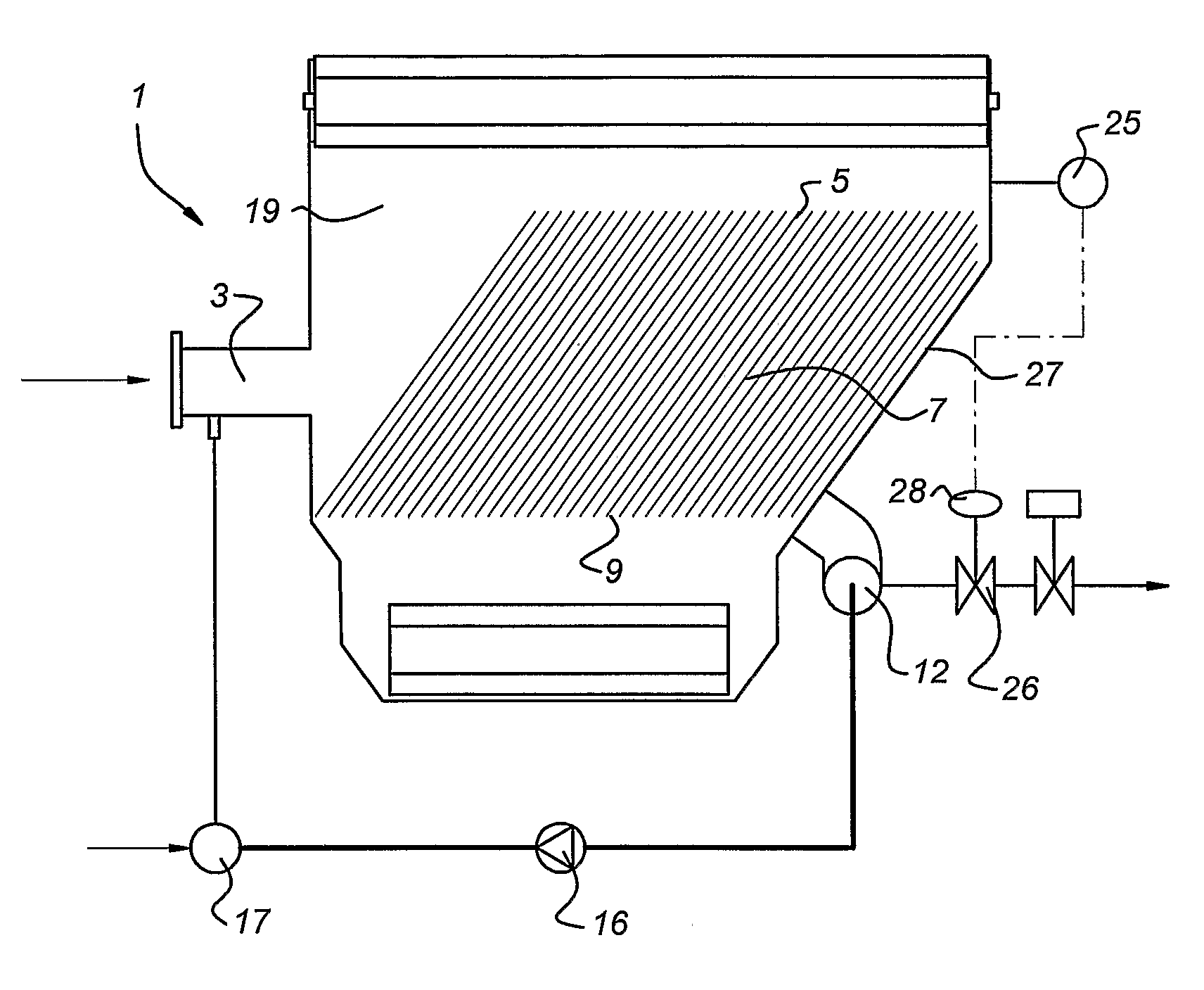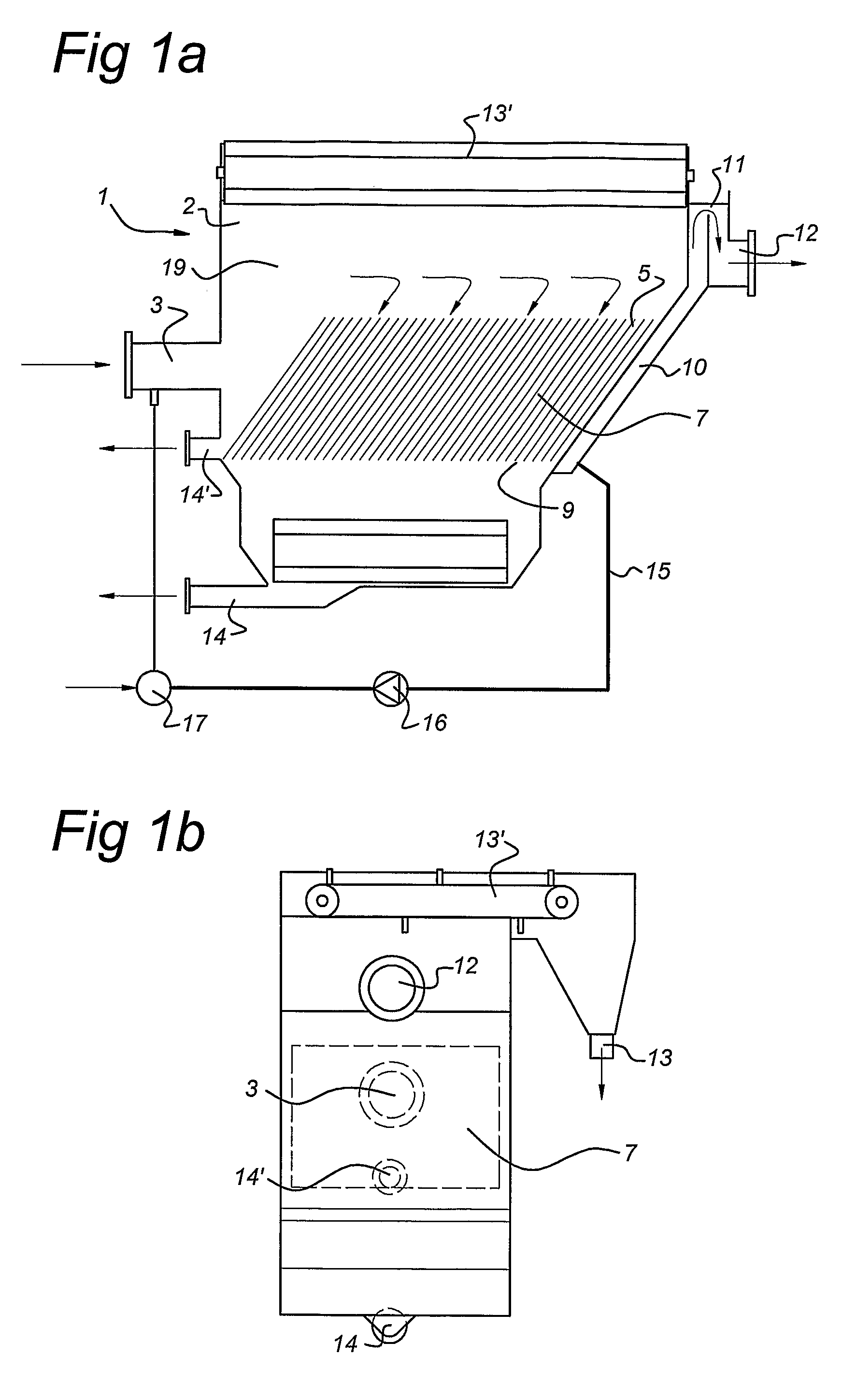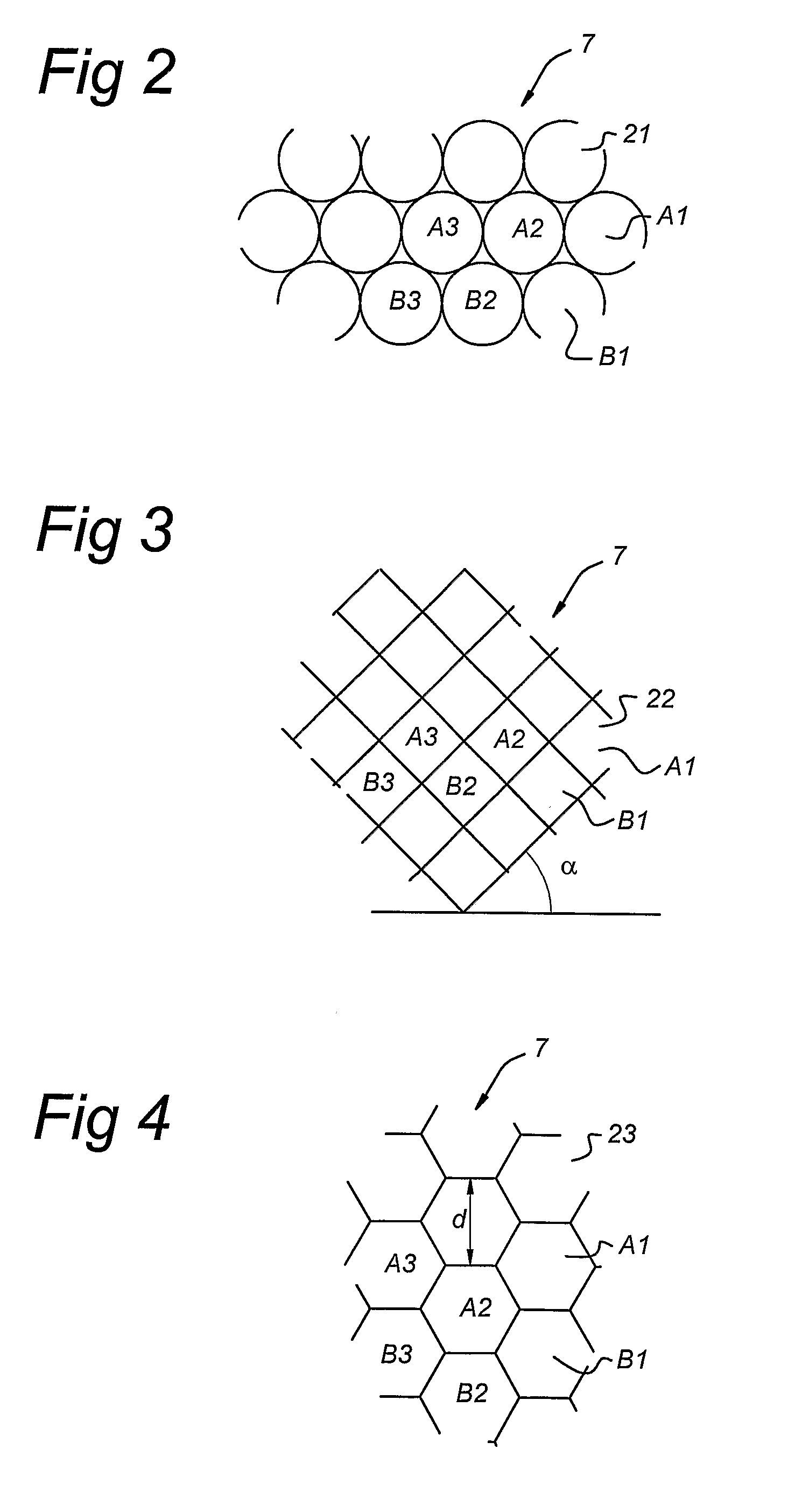Separator device
- Summary
- Abstract
- Description
- Claims
- Application Information
AI Technical Summary
Benefits of technology
Problems solved by technology
Method used
Image
Examples
Embodiment Construction
[0031]FIG. 1 shows a separator device 1, with an inlet 3 for receiving a mixture of substances, such as waste water. The mixture flows to an inlet end 5 of a flow element 7. The flow element 7 is schematically indicated in this figure, and comprises a 3-dimensional array of parallel flow channels. The flow channels are oriented at an angle to the horizontal, for instance at a slanting angle of 60°. From an outlet end 9 of the flow element 7, a first fraction of the mixture, such as water, flows through an upwardly extending channel 10 to an overflow weir 11, and from there to a first outlet 12. The second fraction, such as oil, grease or solids, is collected in compartment 19 and is discharged via a transport belt 13′ through second outlet 13, shown in FIG. 1B. Heavy debris, such as sand, may be discharged through outlet 14. The separator device may be drained via outlet 14′. A return duct 15 is attached to the lower end of channel 10 and is via pump 16 connected to air mixing devic...
PUM
| Property | Measurement | Unit |
|---|---|---|
| Angle | aaaaa | aaaaa |
| Length | aaaaa | aaaaa |
| Length | aaaaa | aaaaa |
Abstract
Description
Claims
Application Information
 Login to View More
Login to View More - R&D
- Intellectual Property
- Life Sciences
- Materials
- Tech Scout
- Unparalleled Data Quality
- Higher Quality Content
- 60% Fewer Hallucinations
Browse by: Latest US Patents, China's latest patents, Technical Efficacy Thesaurus, Application Domain, Technology Topic, Popular Technical Reports.
© 2025 PatSnap. All rights reserved.Legal|Privacy policy|Modern Slavery Act Transparency Statement|Sitemap|About US| Contact US: help@patsnap.com



